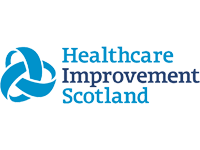Arthroscopic Removal - Loose Bodies and Knee Joint Debridement
Arthroscopic removal of loose bodies and knee joint debridement is a surgical procedure that uses arthroscopy to treat specific problems with the knee joint, most notably the presence of loose bodies and the removal of inflammatory or damaged tissue.
Available at any of our UK clinics
0% Finance Available
CQC and HIS Regulated
GMC Registered Surgeons
Out of Hours Aftercare
Arthroscopic Removal - Loose Bodies and Knee Joint Debridement
The surgeon makes a few tiny incisions to see into the joint and treat it with arthroscopy, a minimally invasive surgical method. The goals of arthroscopic loose body removal and debridement of the knee joint are to reduce discomfort, enhance joint function, and treat underlying problems.
Procedure Time:
45 minutes
Return to Work:
4 weeks
Full Recovery:
8-12 Weeks
Price:
£3800 (Fixed)
What to expect at the time of your surgery:
Local anesthesia is used to execute the procedure. Postoperative pain treatment can also be accomplished using regional anaesthesia. Portals are tiny incisions made all around the knee joint. Through one of these incisions, an arthroscope—a tiny camera—is inserted to provide a clear image of the joint’s interior on a monitor. The surgeon uses the arthroscope to carefully inspect the joint to find any loose bodies. These could be broken pieces of cartilage or bone that are causing pain, edoema, or limited mobility. To remove the indicated loose bodies, specialised devices are put through additional holes. To carefully remove these pieces from the joint, the surgeon may utilise suction or shears. The process of debridement entails removing irritated or damaged knee joint tissue. This could involve treating synovitis (inflammation of the synovial lining), cutting frayed meniscal tissue, or smoothing roughened cartilage.
What to expect after your surgery:
Following the completion of the surgery, the knee is frequently wrapped and the incisions closed. Postoperative instructions are given to patients; these instructions may include a rehabilitation programme, crutch use instructions, and guidelines for weight bearing. It could be suggested that you undergo physical therapy to help with the healing process. Although recovery times vary, many patients are back to their regular routines in a matter of weeks. The degree of recuperation is contingent upon various aspects, including the intricacy of the treatment and the patient’s reaction to therapy.
Arthroscopic Removal - Loose Bodies and Knee Joint Debridement Prices
Arthroscopic Removal - Loose Bodies and Knee Joint Debridement prices are fixed, which is £3800
For a no obligation quote, tailored specifically to you, please find your nearest Signature Clinic and book in for free consultation with one of our experienced surgeons. Your requirements are discussed in full confidence in a friendly and relaxed atmosphere.
Following your consultation, the price you are quoted includes everything and there are no extra or hidden costs. Advice, treatment and aftercare are all part of our package to ensure your experience is positive from beginning to end.
Next Steps
Find out more about the procedure and treatment with a free no obligation consultation. To meet with one of our surgeons and receive free expert advice tailored to your needs, please call us or book your free consultation using our quick online form.
Arthroscopic Removal - Loose Bodies and Knee Joint Debridement FAQ
Fragments of bone or cartilage that have become loose within the knee joint are referred to as loose bodies. These pieces may enlarge, hurt, and impair the ability of the joint to move normally.
It’s common to feel some soreness following surgery. Medication and physical therapy are two common pain management techniques that are administered to assist in the control of postoperative pain.
Your consultation is 100% FREE and you are under no obligation





